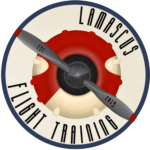FAQ's
This time frame varies greatly, it could be as little as 2-3 months. However depending on frequency of lessons and commitment of the student that number is usually much higher. I always encourage a minimum of two lessons a week. While we can work with any schedule less than two per week usually results in less time spent learning new material, more time spent reviewing lessons previously learned.
The FAA minimum flight hours to qualify for the private pilot license is 40 hours total, including 20 hours dual instruction and at least 10 hours of solo flight time where the student is the sole occupant of the aircraft. While these are *minimum* requirements few people will be ready within that time frame. The typical flight student will have around 60-75 hours flight time by the time they are ready for their checkride. This is assuming maintaining at least two flight lessons per week.
A reasonable estimate would be $14,000 to $18,000 dollars. This is start to finish including all aircraft rental, flight instruction, pilot materials, and testing fees.
For financing a part 61 training program my current recommendation would be to inquire with AOPA flight training finance.
You’re going to want your own headset once you are sure you’d like to pursue the private pilot license. For the first few lessons I can provide a headset. David Clark makes a quality Passive Noise Reduction headset that can usually be had in the $200 range. Some of the higher quality headsets include brands such as Lightspeed and Bose. With these manufacturers you start to see primarily Active Noise Reduction headsets which is a method for reducing unwanted sound by the addition of a second sound specifically designed to cancel the first. Lightspeed offers the Sierra model as a mid-range headset around the $600 mark. Lightspeed also offers the Zulu 3 for around $850 while Bose offers the A20 for around $1100.
Well yes and no. We follow strict maintenance practices that ensure aircraft are always maintained in an airworthy and safe condition. All maintenance actions are logged carefully to ensure we have a detailed record of any repairs done to an aircraft. “New” airplanes are also relatively few and far between. From the 1940’s until around the early 1980’s aviation was booming. In fact the majority of small aircraft you see overhead today were built around the 1960’s-1970’s. Thanks to our maintenance practices these aircraft are still very safe to fly. In fact the 172 was proven to be of such good design that it has remained relatively unchanged since the late 1960’s! Seriously, if you place our flight trainer next to a brand new model few people could tell the difference.
Head on over to the contact page to book your discovery flight. That’s it!
